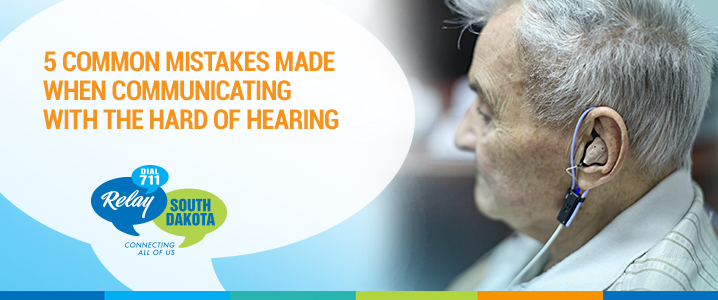
News
Understanding the Art of Lip Reading: 5 Things to Know

Read my lips! You may have heard that phrase when someone wants to hammer home a point, like a mother telling a child, “Read my lips. You're not having any more ice cream.”
While you usually might not think twice when hearing that phrase, for many hard-of-hearing people lip reading can be an invaluable communication skill.
Here are a few things you should understand about lip reading.
Read the article5 Common Mistakes Made When Communicating with the Hard of Hearing

Let’s say you’re about to have a conversation with a friend, loved one or even a stranger who has experienced hearing loss of some sort. What are you most apt to do? Do you increase your speaking volume? Do you make assumptions about your conversation partner?
Here are just a few of the most common mistakes people make when speaking with hard-of-hearing individuals.
Read the article6 Facts About Sign Language You Didn’t Know

Spoken languages are complex and can take years of practice and immersion to gain fluency. Sign languages, like spoken languages, have grammar rules, rhythms and differ from language to language.
Here are six facts you might not have known about sign language.
Read the articleHow to Improve Your Relationships Amid Hearing Loss

It’s February—and love is perhaps in the air. When it comes to hearing loss, communication and conversation are even more pivotal to your relationships. It’s important to take the steps to ensure you can engage with the people you love without frustration or miscommunication.
Here are a few tips for managing relationship conversations amid hearing loss.
Read the articleThe Guide to Keeping Your Hearing Safe During Football Games

It’s that time of year—if you’re a pigskin fan, you’re probably going to hit a few games now and again throughout the next few weeks. With the Super Bowl fast approaching, football games are a hotspot.
But when it comes to outdoor or partially outdoor games, are you taking the proper precautions to protect your hearing? Here are some tips.
Read the articleNew Year’s Resolutions: How to Prioritize Your Hearing in 2017

Welcome to another year—with a new set of challenges to face and opportunities to embrace. Many people enjoy making resolutions at the start of the new year, but few follow through on those new-year promises.
Here are four popular New Year’s resolutions and why addressing your hearing loss can help you achieve them and have a successful 2017.
Read the articleHow Treating Hearing Loss Affects Your Physical and Mental Health

Rule No. 1 when it comes to hearing loss – don’t let it cause you to be anti-social or retreat from spending quality time with friends and family. One of the best ways to avoid this pitfall is to make efforts to treat your hearing loss, whether it’s assistive listening devices (ALDs) or hearing aids.
Here are just some of the many health benefits of taking the time to treat your hearing loss.
Read the articleThe Gift of Communication: 3 Programs Ideal for Communication Access

It’s the holiday season – and what better gift than that of communication? For those who are deaf, hard of hearing or speech-disabled, communication can be a very useful gift.
Luckily Relay South Dakota offers some programs ideally built for this type of recipient – here’s a rundown of the services available.
Read the article6 Tips for Communicating More Effectively Through Hearing Loss

Having a thorough conversation can sometimes be a challenge if you or your conversation partner has experienced hearing loss. Missing out on details or having to repeat statements can make conversations frustrating.
Next time, keep these six tips in mind to help your conversations flow more smoothly.
Read the article5 Tips for Managing Hearing Loss in the Workplace

Hearing loss can add unnecessary stress and potentially even hinder performance in the workplace. It’s crucial to make sure you and your employer are on the same page so you can perform to the best of your ability at work.
Take a look at these five tips to help you work through hearing loss.
Read the article
